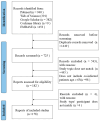Viral Infections in Elderly Individuals: A Comprehensive Overview of SARS-CoV-2 and Influenza Susceptibility, Pathogenesis, and Clinical Treatment Strategies
- PMID: 40333344
- PMCID: PMC12031201
- DOI: 10.3390/vaccines13040431
Viral Infections in Elderly Individuals: A Comprehensive Overview of SARS-CoV-2 and Influenza Susceptibility, Pathogenesis, and Clinical Treatment Strategies
Abstract
As age increases, the immune function of elderly individuals gradually decreases, increasing their susceptibility to infectious diseases. Therefore, further research on common viral infections in the elderly population, especially severe acute respiratory syndrome coronavirus 2 (SARS-CoV-2) and influenza viruses, is crucial for scientific progress. This review delves into the genetic structure, infection mechanisms, and impact of coinfections with these two viruses and provides a detailed analysis of the reasons for the increased susceptibility of elderly individuals to dual viral infections. We evaluated the clinical manifestations in elderly individuals following coinfections, including complications in the respiratory, gastrointestinal, nervous, and cardiovascular systems. Ultimately, we have summarized the current strategies for the prevention, diagnosis, and treatment of SARS-CoV-2 and influenza coinfections in older adults. Through these studies, we aim to reduce the risk of dual infections in elderly individuals and provide a scientific basis for the prevention, diagnosis, and treatment of age-related viral diseases, thereby improving their health status.
Keywords: SARS-CoV-2; aging; coinfections; influenza viruses; pathogenesis.
Conflict of interest statement
The authors declare that they have no conflicts of interest.
Figures








Similar articles
-
Clinical significance and role of coinfections with respiratory pathogens among individuals with confirmed severe acute respiratory syndrome coronavirus-2 infection.Front Public Health. 2022 Sep 2;10:959319. doi: 10.3389/fpubh.2022.959319. eCollection 2022. Front Public Health. 2022. PMID: 36117597 Free PMC article.
-
The Changing Landscape of Respiratory Viruses Contributing to Hospitalizations in Quebec, Canada: Results From an Active Hospital-Based Surveillance Study.JMIR Public Health Surveill. 2024 May 6;10:e40792. doi: 10.2196/40792. JMIR Public Health Surveill. 2024. PMID: 38709551 Free PMC article.
-
SARS-CoV-2 and Influenza A Virus Coinfections in Ferrets.J Virol. 2022 Mar 9;96(5):e0179121. doi: 10.1128/JVI.01791-21. Epub 2021 Dec 22. J Virol. 2022. PMID: 34936487 Free PMC article.
-
Burden of Acute Respiratory Infections Caused by Influenza Virus, Respiratory Syncytial Virus, and SARS-CoV-2 with Consideration of Older Adults: A Narrative Review.Infect Dis Ther. 2025 Jan;14(Suppl 1):5-37. doi: 10.1007/s40121-024-01080-4. Epub 2024 Dec 30. Infect Dis Ther. 2025. PMID: 39739200 Free PMC article. Review.
-
A Narrative Review of Key Risk Factors for Severe Illness Following SARS-CoV-2, Influenza Virus, and Respiratory Syncytial Virus Infection.Infect Dis Ther. 2025 Jan;14(Suppl 1):39-61. doi: 10.1007/s40121-024-01081-3. Epub 2024 Dec 30. Infect Dis Ther. 2025. PMID: 39739198 Free PMC article. Review.
References
-
- Fang E.F., Xie C., Schenkel J.A., Wu C., Long Q., Cui H., Aman Y., Frank J., Liao J., Zou H., et al. A research agenda for ageing in China in the 21st century (2nd edition): Focusing on basic and translational research, long-term care, policy and social networks. Ageing Res. Rev. 2020;64:101174. doi: 10.1016/j.arr.2020.101174. - DOI - PMC - PubMed
Publication types
Grants and funding
LinkOut - more resources
Full Text Sources
Research Materials
Miscellaneous

